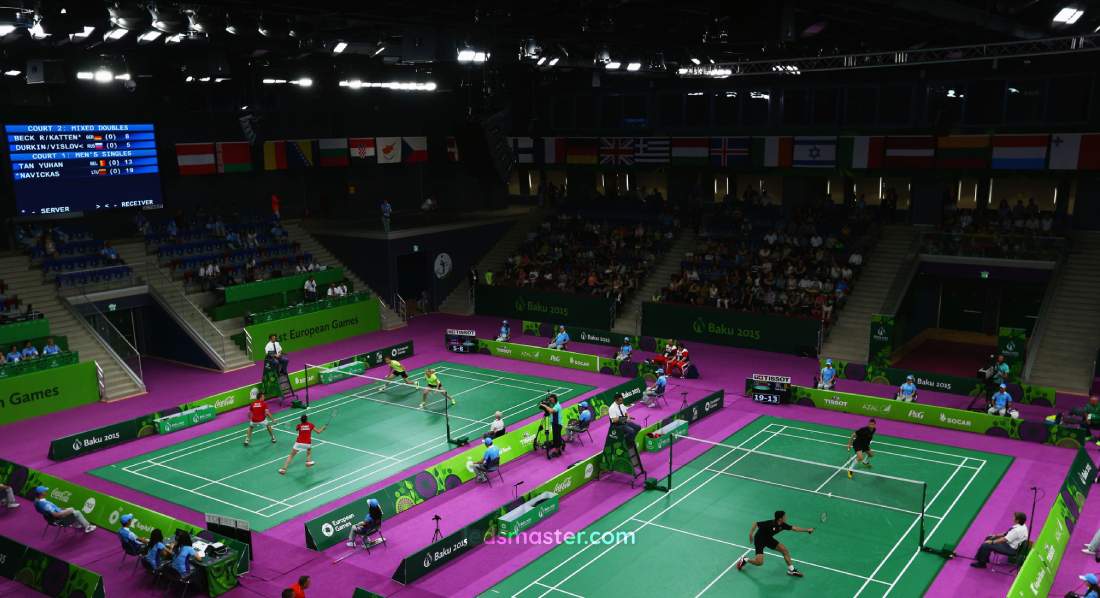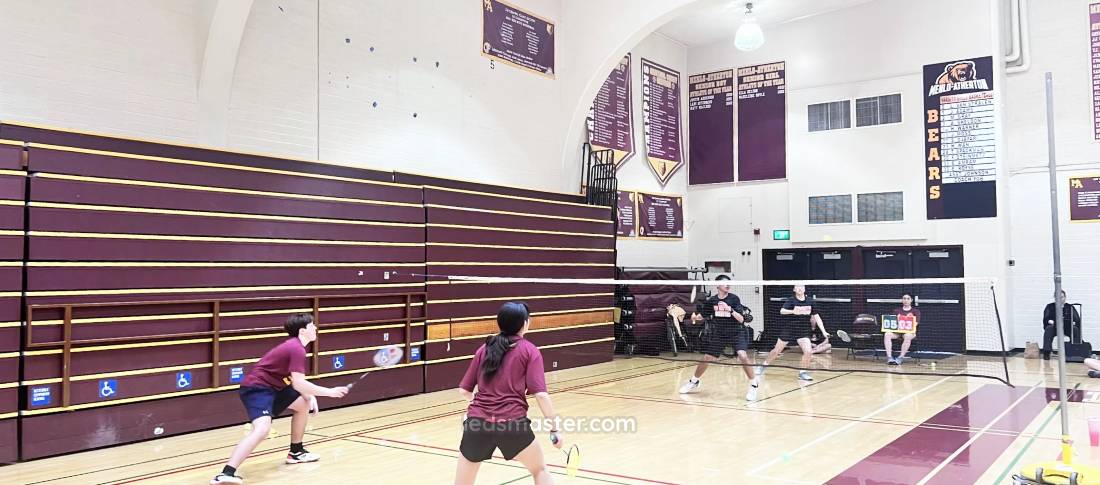Our Badminton Court Lighting system is engineered to deliver the perfect balance of brightness and clarity, ensuring you never miss a moment on the court. Whether you’re training for a tournament or enjoying a friendly match with friends, our advanced lighting solutions create an optimal environment for focus and performance.
Experience the ultimate in badminton court illumination with our cutting-edge Badminton Lighting solutions. Designed for optimal performance, our lights ensure exceptional brightness and uniformity, casting a clear, shadow-free glow across the entire playing area. Featuring a balanced color temperature for natural visibility and flicker-free operation to maintain uninterrupted focus, our lighting systems are your gateway to superior gameplay.
Get your complimentary lighting design today
Table of Contents
ToggleA well-designed badminton court lighting system starts with understanding the right number of lights required for consistent, comprehensive coverage. This involves taking into account the court dimensions, ceiling height, fixture type, and placement strategy.
Standard badminton courts measure 6.1 meters in width and 13.4 meters in length, but the specifications for lighting are not one-size-fits-all.

The size and height of the playing area influence the intensity and placement of lights. Higher ceilings may require fixtures with focused beams or greater lumens, while courts with lower ceilings need more evenly distributed fixtures to prevent glare and shadows.
Different lighting fixtures come with unique beam angles, which influence how light is spread across the court. Narrow beam angles (15-30 degrees) are suitable for higher ceilings, concentrating light over specific areas, while broader angles (60-120 degrees) work well for lower ceilings, dispersing light more evenly. Selecting fixtures with adjustable angles provides flexibility to accommodate various ceiling heights.
Professionals often employ lighting design software to test layouts virtually before installation. These simulations help to determine the best locations for fixtures and ensure uniform brightness, eliminating shadowed or overly bright areas. By examining light spread, distribution, and even foot-candle levels, designers can guarantee optimal visibility across the court’s surface.
Brightness levels on badminton courts create a clear, distraction-free environment for players. Consistent illumination ensures that players can see every detail, from the shuttlecock to the lines on the court, without glare or shadows. Brightness is typically measured in lux (or foot-candles), which quantifies the amount of light reaching a surface.
For recreational play, a brightness level of around 300-500 lux is sufficient. For professional and competitive courts, however, brightness can range from 750 to 1000 lux, providing the clarity and precision needed for fast-paced games.
Uniform light distribution is fundamental in badminton, as uneven lighting can cause players to misjudge shuttlecock trajectories and speeds. Maintaining consistent lux levels across the entire court means that players experience a stable lighting environment regardless of their position, reducing visual strain and increasing accuracy.
By adjusting the beam angles, lighting designers can ensure that each fixture contributes to overall uniformity. Combining fixtures with wide and narrow angles can fill in gaps, minimize shadows, and ensure an even light spread. These configurations prevent players from encountering areas that are either too dim or too bright, keeping their attention on the game rather than on adjusting to lighting variances.
Color temperature impacts both the visibility of the game and the players’ comfort. Measured in Kelvin (K), color temperature affects how light appears to the human eye, influencing contrast, depth perception, and even mood.
Badminton courts generally benefit from a color temperature between 5000 and 6000K, which replicates natural daylight. This daylight-mimicking temperature enhances contrast, helping players to distinguish the shuttlecock from its surroundings and judge distances accurately.
Cooler light, particularly in the 5000–6000K range, reduces eye strain over prolonged play sessions. By selecting fixtures with this color range, facility managers can create a comfortable environment where players can focus on the game without visual discomfort, even during extended training or tournament sessions.
For courts designed to host tournaments and events, selecting the right color temperature is also advantageous for spectators. Cooler temperatures provide better clarity, making it easier for the audience to follow the shuttlecock and enjoy a visually pleasant experience.
Uniform color across fixtures maintains visual continuity, preventing shifts in tone or brightness that might distract players. Fixtures with high color rendering indexes (CRI) close to 90 or above are preferred, as they render colors more naturally and accurately, allowing players and spectators to view the court as intended.
Flicker, even if subtle or imperceptible, can disrupt concentration in sports environments. A flicker-free lighting system on a badminton court is essential for maintaining uninterrupted focus, allowing players to track the shuttlecock and respond quickly.
Flicker can affect players’ visual acuity, reducing their ability to follow the fast-moving shuttlecock accurately. LED technology provides consistent, stable light output that helps players maintain focus and make split-second decisions confidently.
Flickering lights can cause discomfort not only for players but also for the audience and referees. Continuous, flicker-free light enhances the viewing experience and reduces eye strain, creating an enjoyable environment for everyone.
Modern LED lights are designed to provide flicker-free illumination, making them a preferred choice for sports facilities. With electronic drivers that stabilize the current, LEDs maintain consistent light quality, avoiding the pulsing associated with older lighting systems.
Facilities can test for flicker-free performance by using high-speed cameras or flicker meters, tools that detect fluctuations in light output. Ensuring that all fixtures meet flicker-free standards during installation reduces the risk of visual distractions for players, especially in competitive or televised matches where every detail matters.
An effective badminton court lighting system requires precise installation and routine maintenance to ensure longevity and optimal performance. Proper mounting height, angles, and positioning are all essential to create uniform lighting conditions across the court.
The height at which fixtures are mounted has a direct impact on light spread and intensity. For indoor badminton courts, lights are typically mounted between 6-9 meters high, providing an even spread without casting shadows.
Fixtures should be angled strategically to minimize glare and direct light away from players’ eyes. Lighting designers work with facility managers to position fixtures for maximum effectiveness while following safety standards and regulations.
Properly installed lighting systems comply with international safety standards, ensuring not only optimal performance but also safety for players, coaches, and spectators. Adhering to regulations fosters a safe environment, reducing the risk of accidents caused by inadequate lighting.
Dust and grime can build up on fixtures over time, reducing light output and altering light quality. Regular cleaning and inspections help maintain brightness levels and prolong fixture life.
Routine checks for flickering, color temperature shifts, or dimming can detect issues early, preventing disruptions during games and reducing the need for extensive repairs.
LED lights are designed for longevity, often lasting up to 50,000 hours or more. By choosing LEDs, facilities reduce maintenance costs and minimize the frequency of bulb replacements, allowing for a cost-effective solution over time.
Energy-efficient lighting not only lowers operational costs but also supports environmental goals, making it a priority for sports facilities worldwide. LEDs offer substantial energy savings while delivering high-quality illumination, allowing badminton courts to operate sustainably.
LED fixtures consume less electricity compared to traditional lighting technologies. For facilities with multiple courts, this translates into considerable energy savings over time, reducing utility costs without sacrificing lighting quality.
By consuming less energy, LED lights contribute to lower carbon emissions. This aligns with the sustainability initiatives of many sports organizations, demonstrating a commitment to environmental responsibility.
Although the initial cost of LEDs may be higher, their long lifespan and energy efficiency make them a cost-effective choice over the years. Facilities can reinvest the savings from reduced electricity and maintenance costs into other areas of improvement, further enhancing the player and spectator experience.
In addition to energy-efficient fixtures, adopting energy management practices like motion sensors or dimmable lights can further reduce energy usage. Automated systems that adjust lighting based on occupancy or natural light levels allow facilities to optimize energy consumption, lowering costs and minimizing waste.

Lighting design has a profound effect on the badminton experience. By choosing the appropriate brightness levels, ensuring even distribution, selecting optimal color temperatures, and incorporating flicker-free, energy-efficient technologies, facility managers can create a court environment that supports peak performance and enjoyment.
A well-lit court is more than just functional; it enhances the game, making every movement, reaction, and rally clear. As lighting technology continues to evolve, sports facilities have the opportunity to leverage these advancements, setting new standards for player safety, comfort, and visual clarity.
By prioritizing high-quality lighting, badminton facilities can create an atmosphere that inspires confidence and precision, elevating the game for both players and spectators alike. Enhanced visibility translates to improved performance, allowing players to execute their skills effectively while enjoying the game they love.
Effective badminton court lighting goes beyond mere illumination—it enhance player performance, safety, and overall experience. By focusing on factors such as brightness, uniformity, color temperature, flicker-free operation, installation, and energy efficiency, sports facilities can create an optimal environment that supports peak athletic performance and enjoyment for players and spectators alike. Investing in high-quality lighting solutions not only enhances visibility and accuracy on the court but also underscores a commitment to excellence and innovation in sports facility management. By leveraging advanced lighting technology and best practices, facilities can elevate the standard of play and ensure memorable experiences for badminton enthusiasts of all ages and skill levels.